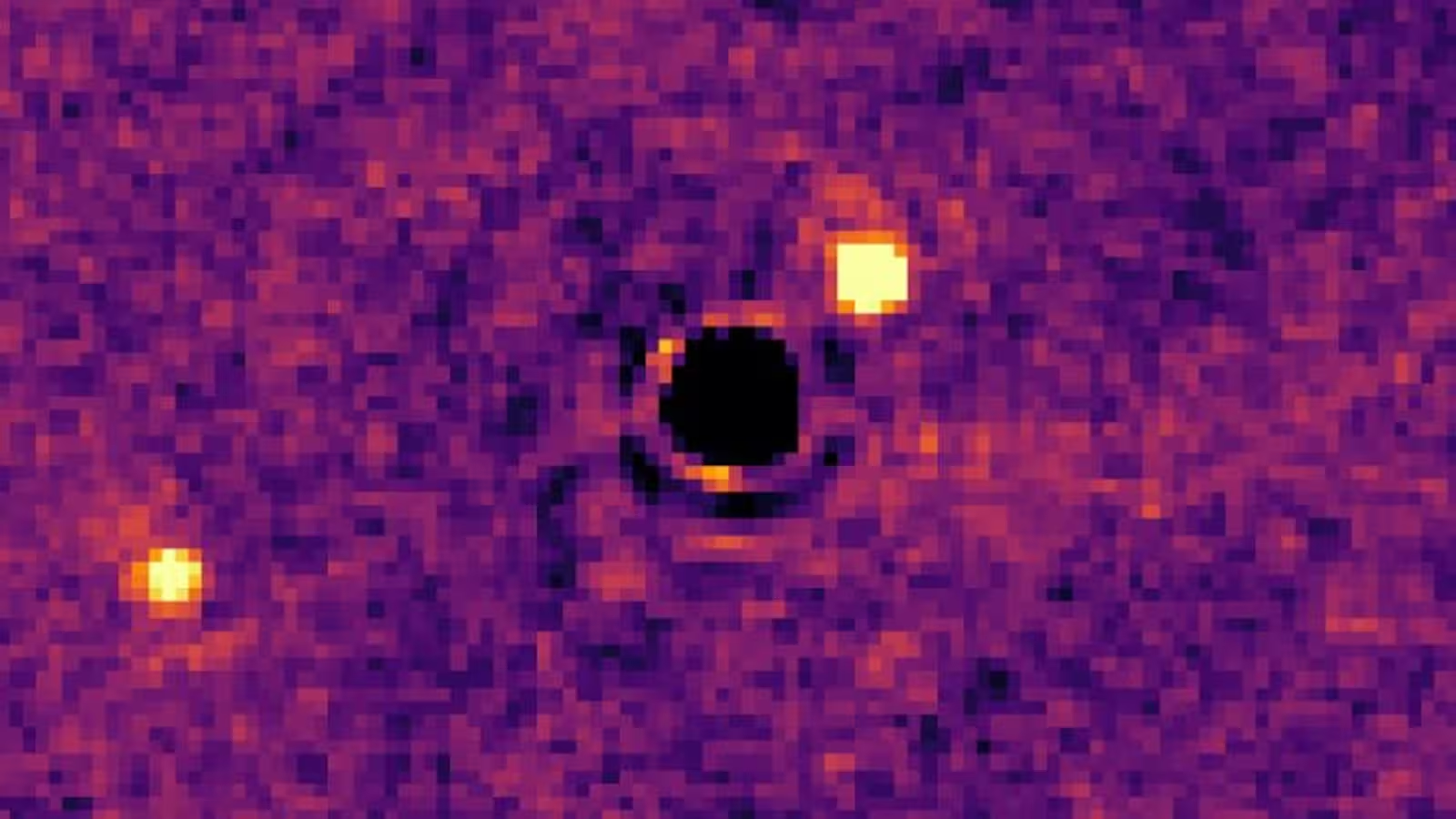4 Minutes
Revolutionary Discovery: JWST Directly Images Its Smallest Exoplanet Yet
In a groundbreaking achievement for exoplanet science, NASA's James Webb Space Telescope (JWST) has directly imaged its smallest extraterrestrial world to date. The exoplanet, designated TWA-7b, orbits a young star about 111 light-years from Earth and represents a stunning milestone in our quest to understand planets beyond our solar system.
Scientific Context: A New Benchmark for Direct Imaging of Exoplanets
Until now, the majority of the nearly 6,000 confirmed exoplanets in the Milky Way have been identified using indirect methods, such as tracking the subtle dimming of a star as a planet transits across it or through variations in the star’s motion caused by gravitational tugs. Direct detection—actually isolating light from the planet itself—is far more challenging due to exoplanets’ faintness and proximity to their host stars. In fact, scientists have directly imaged only about 80 exoplanets so far, and these tend to be significantly more massive than Jupiter.
TWA-7b sets a new precedent. As a cold gas giant with roughly one-third the mass of Jupiter (about 100 times Earth’s mass), it is the lightest exoplanet ever directly imaged by humanity. Its orbit around its red dwarf host star, TWA-7, places it 52 times further from its star than the Earth is from the Sun—akin to the region of the Kuiper Belt in our own solar system, far beyond Pluto.
Observational Breakthrough with JWST’s MIRI Instrument
Leading the discovery, astronomer Anne-Marie Lagrange and her team at the Paris Observatory exploited the JWST’s powerful Mid-Infrared Instrument (MIRI). This technology opened a brand-new window for observing planets with masses below that of Jupiter through direct imaging.
In their published findings, the researchers highlighted that TWA-7b extends the direct imaging capability to worlds at least ten times less massive than previously observed exoplanets—potentially even as small as 25 to 30 Earth masses under the right conditions. They emphasize this as an immense step forward in exoplanet detection technology, placing JWST at the forefront of the search for smaller and more distant planets around other stars.
Unraveling Planet Formation in a Young System
TWA-7, the host star, is extraordinarily youthful—measured at only 6.4 million years old, equivalent to a toddler among stars—and still surrounded by the protoplanetary disk of dust and gas that fed its early growth. This disk is the nursery from which planets form: as material orbits the star, it clumps together, eventually forming fully-fledged planets. As these planets coalesce, they carve out gaps and shepherd rings within the disk, reminiscent of how shepherd moons maintain Saturn's ring structure.
What makes JWST’s observations so illuminating is their extraordinary level of detail. For the first time, astronomers could not only detect a planet within a protoplanetary disk but also begin confirming theoretical predictions on how nascent planets interact with their birth material. TWA-7’s unique geometry—with its rotational axis pointed toward Earth—allowed a clear view of the disk, which features three distinct rings. By targeting gaps within these rings, JWST identified a faint source 1.5 arcseconds from TWA-7, conclusively interpreted as the cold, sub-Jupiter-mass planet TWA-7b. Initial analysis suggests its mass is comparable to Saturn’s.

Implications for Exoplanet Science and Future Exploration
The successful imaging of TWA-7b demonstrates JWST's critical role in pushing the boundaries of planetary science. Unlike conventional techniques focused on indirect detection or atmospheric characterization via starlight modulation, direct imaging enables scientists to study planets' atmospheric and interior properties in ways that would otherwise be impossible.
The research team sees TWA-7b as an ideal candidate for extended study, especially in modeling how young planets dynamically interact with residual disk material. Because TWA-7b is well separated angularly from its star, the planet is primed for direct spectroscopic investigations. Future observations may reveal critical details about its atmospheric composition, temperature (estimated at a chilly 320 Kelvin), and internal structure. Furthermore, such studies can be compared to our solar system’s giant planets, offering vital clues about planetary evolution and diversity.
As Dr. Lagrange's team notes, "The JWST Mid-Infrared Instrument has opened a new era in the study of sub-Jupiter-mass planets using direct imaging." They suggest that the detection of TWA-7b is only the beginning and that JWST's capabilities may soon uncover even smaller, colder worlds—planets previously beyond our observational reach.
Conclusion
The direct imaging of TWA-7b by the James Webb Space Telescope stands as a landmark in the study of exoplanets. By capturing the smallest alien world ever seen with direct observation, astronomers not only extended the boundaries of known planetary systems, but also opened up new avenues for exploring the origins and diversity of planets throughout the galaxy. JWST’s success heralds a new age of discovery, promising deeper insights into how planets form and evolve—both in familiar and uncharted corners of the universe.
Source: doi



Comments